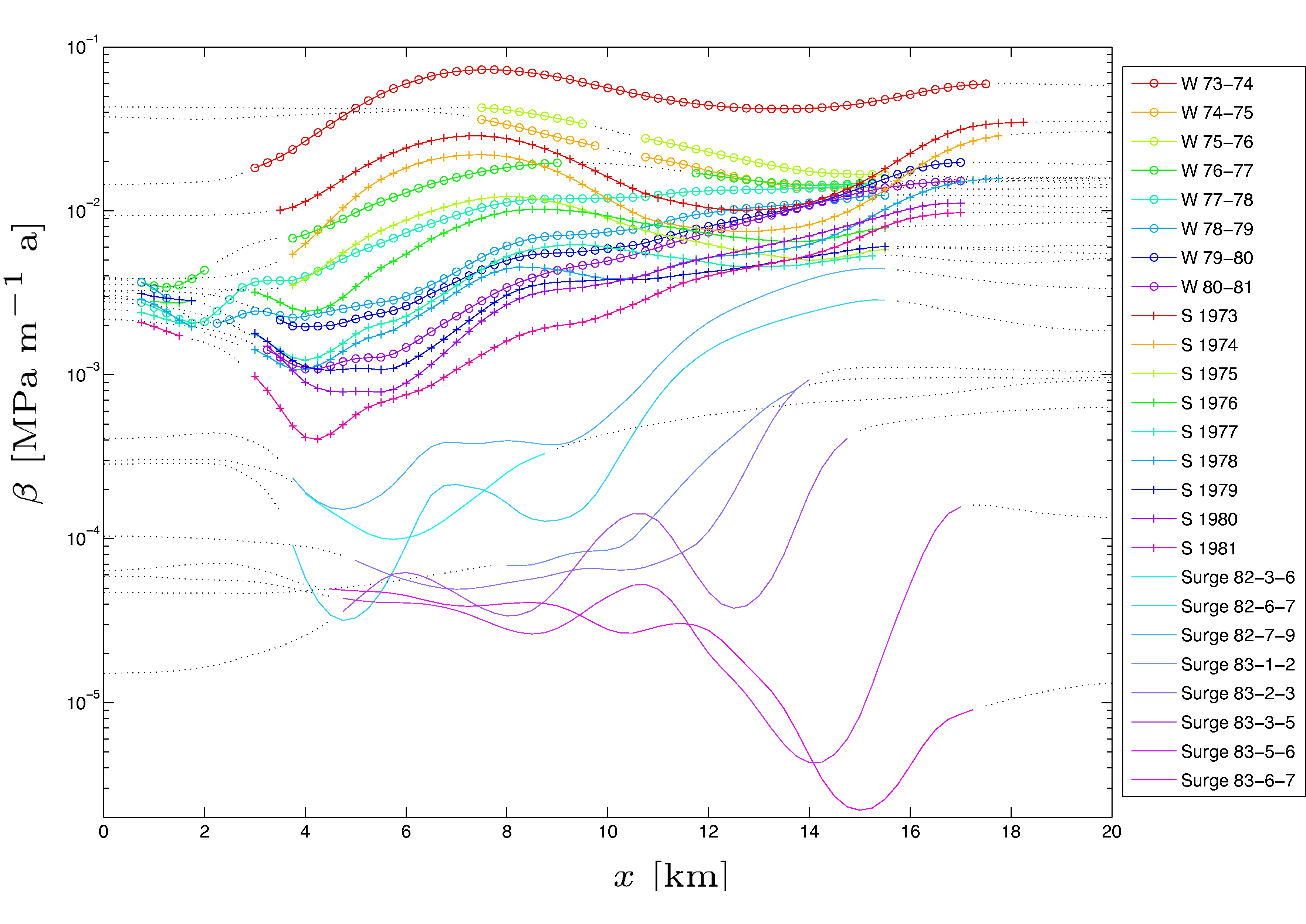Section: New Results
Inverse methods for Glaciology
Dating ice matrix and gas bubbles
Participants : Eric Blayo, Bénédicte Lemieux-Dudon, Habib Toye Mahamadou Kele.
Dating ice matrix and gas bubbles of ice-cores is essential to study paleoclimates. Inverse modelling implemented on 1D ice flow models is being applied for a few years to construct the ice chronology of several deep ice cores. Such a method based on a Monte Carlo algorithm was implemented under the assumption of perfect ice flow models, for one core at a time, and without including the inverse modelling of the densification models, which enables to construct the gas age scale. This approach faces three issues: 1) frequent discrepancies between core chronologies (lack of stratigraphic links between cores as data constraints), 2) frequent failure to verify relevant data constraints (perfect model assumption is too strong), and 3) frequent inconsistency between gas and ice age scales.
A new approach was proposed during the B. Lemieux-Dudon's PhD to circumvent these restrictions. It introduces the model error in terms of correction functions on three key quantities from which one can calculate both the ice and gas age scales: a) the accumulation rate, b) the total thinning function, and c) the close-off depth in meters of ice equivalent (i.e. depth below the ice-sheet surface where the atmosphere is trapped). A variational formulation of the inverse problem is constructed. It includes several ice cores with background scenarios and paleo data as constraints, among which:
-
stratigraphic links between pair of ice cores (methane, tephra, cosmogenic isotopes, etc.) to derive consistent dating between cores,
-
ice and gas age markers, as well as delta-depth data (i.e., in situ depth interval between gas and ice of the same age), which enable to optimize the gas and ice age scales simultaneously.
The cost function includes covariance error matrices, and confidence intervals of the solution can be assessed. This method was applied to derive simultaneously a common age scale for the North Grip core and for the two EPICA cores (DML and DC). [76] .
This method arouses some interest in the glaciological and paleo community ( [68] , [87] ). Some further developments are however mandatory to ensure the robustness of the dating solution: (i) code optimization, (ii) diagnostics on the assimilation system, and (iii) calibration of the background error covariance matrices.
H. Toye Mahamadou Kele (a 2-year INRIA young engineer contract) joined the MOISE team to modify the code. During the first year, he implemented a shared memory parallelization of the code, and he currently works on the calibration of the covariance error matrices by implementing a posteriori diagnostics.
Inverse methods for large scale ice-sheet models
Participants : Bertrand Bonan, Maëlle Nodet, Catherine Ritz.
In collaboration with C. Ritz (CNRS, Laboratoire de Glaciologie et Geophysique de l'Environnement (LGGE), Grenoble), we aim to develop adjoint methods for ice cap models.
In the framework of global warming, the evolution of sea level is a major but ill-known phenomenon. It is difficult to validate the models which are used to predict the sea level elevation, because observations are heterogeneous and sparse.
Data acquisition in polar glaciology is difficult and expensive. Satellite data have a good spatial coverage, but they allow only indirect observation of the interesting data. We wish to make the most of all available data and evaluate where/when/what we have to add new observations. Sensitivity analysis, and in particular the adjoint method, allows to identify the most influential parameters and variables and can help to design the observation network.
The ANR project ADAGe started one year ago on this subject, and B. Bonan started his PhD in September 2010. During his master internship, he implemented the adjoint code of a simplified ice-sheet flow-line model, Winnie, developed by C. Ritz at LGGE. We then performed twin experiments of data assimilation. These preliminary results have been presented at two international conferences [32] , [33] .
We then implemented Ensemble Kalman Filter (EnKF) on Winnie, which we would like to compare to variational assimilation methods. Coding and testing for the EnKF are still in progress.
Inverse methods for full-Stokes glaciology models
Participants : Olivier Gagliardini, Maëlle Nodet, Catherine Ritz.
We are also interested in inverse modelling for another class of glaciology models, called full-Stokes models. Such a model is developed by LGGE and CSC in Finland, called Elmer/Ice. Contrary to large scale models, Elmer/Ice is based on the full Stokes equations, and no asumptions regarding aspect ratio are made, so that this model is well adapted to high resolution small scale modelling, such as glaciers (and more recently the whole Greenland ice-sheet).
In collaboration with O. Gagliardini, F. Gillet-Chaulet and C. Ritz (Laboratoire de Glaciologie et Géophysique de l'Environnement (LGGE), Grenoble), we investigated a new method to solve inverse problems for a Full-Stokes model of Groenland, which consisted in solving iteratively a sequence of Neumann and Dirichlet problems within a gradient descent algorithm. We also compared this method to an approximate variational algorithm, using the fact that the full Stokes equations are almost self-adjoint. These results have been submitted for publication and presented at EGU and AGU [36] , [37] .
With O. Gagliardini, F. Gillet-Chaulet and M. Jay-Allemand (LGGE), we also implemented these methods to study a complex phenomenon: the surge of Variegated glacier (Alaska). This glacier is indeed known to surge periodically, that is to accelerate suddenly during 1-2 years, and then come back to a quiescent phase during 10-20 years. Inverse modelling allowed us to infer changes in basal conditions from surface velocities, and to come to a better understanding of the surge phenomenon, as seen in Figure 6 . These results have been published [6] and presented at AGU [42] .
|



